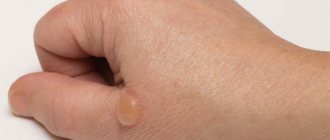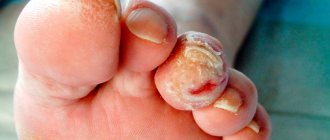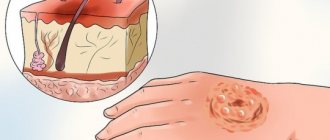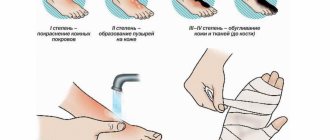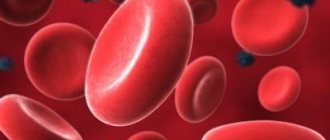Electric shock occurs when you come into contact with an electrical circuit that contains voltage sources and/or current sources that can cause current to flow through the energized part of the body. Typically, a person is sensitive to passing a current of more than 1 mA. In addition, in high-voltage installations, an electric shock is possible without touching live elements, as a result of current leakage or breakdown of the air gap. The strength of the injury depends on the power of the discharge, on the time of exposure, on the nature of the current (direct or alternating), on the condition of the person - the moisture of the hands, etc., as well as on the place of contact and the path of current passage through the body.
Due to the high electrical resistance of human tissues, they heat up quite quickly, which can cause burns. Even relatively small stresses, with short-term contact with the chest, can cause a malfunction of the heart muscle. An electric shock can cause problems in the nervous system, such as erratic muscle contractions. Repeated impacts can cause neuropathy. If the head is hit by an electric current, loss of consciousness may occur.
At sufficiently high voltages and currents, so-called electric arcs can occur, causing severe thermal burns. The electric arc also produces strong light emissions.
Saving the life of a person struck by an electric current largely depends on the speed and correctness of the actions of those assisting him. First aid should be provided immediately, if possible at the scene of the incident, while simultaneously calling medical help.
The person providing assistance should know:
- main signs of violation of the vital functions of the human body;
- general principles of first aid and its techniques in relation to the nature of the injury received by the victim;
- the main methods of carrying and evacuating victims.
The person providing assistance must be able to:
- assess the condition of the victim and determine what kind of help he needs in the first place;
- ensure free patency of the upper respiratory tract;
- perform artificial respiration “mouth to mouth” (“mouth to nose”) and closed cardiac massage and evaluate their effectiveness;
- determine the advisability of calling the victim by ambulance or passing transport.
First aid sequence:
1. Eliminate the impact on the body of damaging factors that threaten the health and life of the victim (free from electric current, remove from a contaminated atmosphere, extinguish burning clothing, etc.), assess the condition of the victim; 2. Determine the nature and severity of the injury, the greatest threat to the life of the victim and the sequence of measures to save him; 3. Carry out the necessary measures to save the victim in order of urgency (restore airway patency, perform artificial respiration, external cardiac massage); 4. Support the victim’s basic vital functions until a medical professional arrives; 5. Call an ambulance or take measures to transport the victim to the nearest medical facility.
In case of electric shock, death is often clinical (“imaginary”), so you should never refuse to provide assistance to the victim and consider him dead due to lack of breathing, heartbeat, or pulse.
Only a doctor has the right to decide on the feasibility or safety of measures to revive the victim and make a conclusion about his death.
Types of impact
The body can simultaneously undergo the following actions:
Thermal effects, expressed in the formation of burns on certain areas of the skin, an increase in body temperature, an effect on the functioning of the heart, blood vessels and other important organs.
Electrolytic influence is characterized by the breakdown of fluids in the body and changes in the structure of the blood.
With biological damage, the structure of muscle and nervous tissue changes. The heart muscles and lungs are subjected to severe stress, the consequences of which lead to a lack of heartbeat or difficulty breathing.
The mechanical consequences of the impact of an electric discharge are expressed in the separation and detachment of tissues, which are a consequence of the electrodynamic shock.
Let's take a closer look at damage caused by electric current and methods of rescue.
Types of damage
Injuries resulting from the action of electric current on a person are divided into two categories:
- local type;
- general type.
The list of first injuries includes electric shock to bones, ligaments and various parts of the skin.
Treatment of electrical burns
Low-voltage electrical burns received at home most often affect a small area and are located on the hands and feet, sometimes in the corners of the mouth, and on the lips. They usually heal within 7-10 days.
To speed up the regeneration process of injured skin, use special healing products. The La-Cri cream for sensitive skin, which contains natural non-hormonal components, has proven itself to be excellent. Its complex composition allows you to simultaneously influence all manifestations of inflammation. The product copes well with skin irritations, promotes rapid healing of burns, and is suitable for adults and children.
Treat the inflamed area with La-Cri cream 1-2 times a day until complete healing, and soon you will forget about irritation. The main thing is to remember the safety rules when using electrical appliances.
Metallization of the skin
Manifests itself under the influence of electric arc discharges. Particles of molten metal tend to penetrate under the upper skin of a person.
This exposure is not fatal, but may cause discomfort. It is much more dangerous than metal particles getting into the eyes, since subsequent treatment does not guarantee a positive result.
Mechanical damage to body parts
An electrical discharge running through a healthy body affects the uniform contraction of muscle tissue. This leads to mechanical injuries. This includes local skin tears, dislocations and fractures. Moreover, a fracture as a result of a fall and as a result of an electric shock are two different things.
The result of mechanical damage after exposure to electric current is complex long-term treatment with the help of highly qualified doctors.
What problems does a multifunctional voltage and current relay solve?How to choose an electrical panel housing for your home?
- Electrical network design
Features of electrical burns
The main danger of electric shock is that electrical burns are a highly unpredictable injury. Unlike a thermal burn, for example, when you touch a hot iron and immediately feel pain, when receiving an electric shock there is no pain.
The burned area loses sensitivity, and a so-called electrical mark (sign) appears at the point of contact with the current source - an area of reddened or charred skin (depending on the degree of the burn). It is usually gray or brown in color and has a slight indentation in the center; marks are oval, rounded and in the form of stripes (when struck by lightning).
General electrical injuries
They are divided into electric shock and electric shock.
Electric shock is an effect on organic tissue through an electric current, resulting in a sharp muscle contraction. A person who has received an electric shock appears distracted at first and has memory problems.
Even if the victim is not diagnosed with serious consequences after the blow, the person’s immunity ultimately suffers. In the future, heart complications and neurological diseases may appear.
Electric shock has the following categories:
- first - muscle cramps occur, while the person is conscious without any deviations;
- second - along with uneven changes in muscles, a person loses consciousness, while the work of the heart and respiratory system is stable;
- third - with loss of consciousness, a slowdown in heart rate and breathing occurs;
- the fourth is the most severe, in which no signs of life are observed, breathing and pulse stop, and death occurs.
Electric shock refers to the severe consequences of exposure to electric current. First, a person experiences a period of excitement, during which the person does not feel pain, but only feels an increase in blood pressure. After some time, the pressure drops, the heartbeat increases, and the victim goes into a depressive state. This period can last from a quarter of an hour to a day.
Who can carry out electrical work?- Workwear for an electrician: what to choose, requirements, standards
Insulation resistance: how to measure basic characteristics, standard and check of protection level
Recovery is facilitated only by timely and professional treatment. If you do not provide first aid in case of electric shock, the consequences will be much worse.
What to do
Actions in case of electrical injury
Having detected a person after an electric shock, it is necessary to follow a certain algorithm of actions. You need to act calmly, quickly and correctly. By doing this, you will not only save his life, but also protect yourself from electric shock, under which the injured person may be.
Where to start:
First of all, de-energize the victim by removing the wires from him using any object that has low electrical conductivity (wood, rubber, glass, paraffin, plastic). A rolled up newspaper or magazine is a good option. If it is not possible to reach a person, if possible, de-energize the room using an electrical panel. If you find a victim on the street, then walk towards him on the ground in small steps, do not run.
Help with electric shocks
Only timely and correct decisions can save a person’s life. First aid should be provided with complete isolation of the current source. It may be located at a significant distance from the scene of the incident.
In this case, you need to quickly get out of the electric discharge with the victim, using materials that are dielectrics. For example, wooden flooring or rubber products are good protection against damage.
Then immediately call doctors and begin providing first aid by performing a heart massage. After this, wait for medical workers, monitoring the condition of the victim. Remember that a person’s life may depend on your prompt and correct actions.
